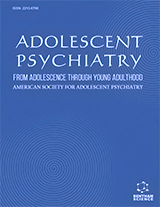Abstract
Background: Antidepressants are widely used to treat adolescent depression, despite ongoing debates regarding their efficacy for youth. In this back and forth, surprisingly little attention has been paid to measurement issues. Though seemingly basic, careful consideration of measure selection and related assessment decisions is critical to evaluating antidepressants as a treatment option for adolescents.
Objectives: The objectives of the current review are to 1) highlight the psychometric quality of commonly used assessment measures in randomized controlled trials (RCTs) and 2) discuss pertinent assessment issues that may impact conclusions drawn regarding antidepressant efficacy. These issues include consistency of findings across measures, selection of an index of symptom change, choice of symptom reporter, and time to assessment follow-up.
Methods: This review discusses the quality of widely used assessment measures and highlights how findings from RCTs differ based on assessment decisions.
Conclusion: Measures and measurement decisions impact conclusions drawn when evaluating antidepressant effectiveness. Even some of the most commonly used measures in RCTs have limited evidence for reliability and validity, calling into question findings derived from those measures. Additionally, antidepressants are inconsistently found to outperform placebo, with only a quarter of comparisons finding antidepressants to be statistically superior. Results are even less promising when looking at youth- or parent-report and longterm follow-ups. The review concludes by providing suggestions for improving assessment of antidepressant effectiveness for youth.
Keywords: Assessment of treatment efficacy, adolescent depression, antidepressants, selective serotonin reuptake inhibitors, RCTS, children depression.
Adolescent Psychiatry
Title:Measurement Matters in Evaluating Youth Antidepressant Effectiveness
Volume: 8 Issue: 2
Author(s): Hannah R. Lawrence*, Douglas W. Nangle and Michelle L. Buffie
Affiliation:
- University of Maine, Orono, Maine,United States
Keywords: Assessment of treatment efficacy, adolescent depression, antidepressants, selective serotonin reuptake inhibitors, RCTS, children depression.
Abstract: Background: Antidepressants are widely used to treat adolescent depression, despite ongoing debates regarding their efficacy for youth. In this back and forth, surprisingly little attention has been paid to measurement issues. Though seemingly basic, careful consideration of measure selection and related assessment decisions is critical to evaluating antidepressants as a treatment option for adolescents.
Objectives: The objectives of the current review are to 1) highlight the psychometric quality of commonly used assessment measures in randomized controlled trials (RCTs) and 2) discuss pertinent assessment issues that may impact conclusions drawn regarding antidepressant efficacy. These issues include consistency of findings across measures, selection of an index of symptom change, choice of symptom reporter, and time to assessment follow-up.
Methods: This review discusses the quality of widely used assessment measures and highlights how findings from RCTs differ based on assessment decisions.
Conclusion: Measures and measurement decisions impact conclusions drawn when evaluating antidepressant effectiveness. Even some of the most commonly used measures in RCTs have limited evidence for reliability and validity, calling into question findings derived from those measures. Additionally, antidepressants are inconsistently found to outperform placebo, with only a quarter of comparisons finding antidepressants to be statistically superior. Results are even less promising when looking at youth- or parent-report and longterm follow-ups. The review concludes by providing suggestions for improving assessment of antidepressant effectiveness for youth.
Export Options
About this article
Cite this article as:
Lawrence R. Hannah *, Nangle W. Douglas and Buffie L. Michelle, Measurement Matters in Evaluating Youth Antidepressant Effectiveness, Adolescent Psychiatry 2018; 8 (2) . https://dx.doi.org/10.2174/2210676608666180620143953
| DOI https://dx.doi.org/10.2174/2210676608666180620143953 |
Print ISSN 2210-6766 |
| Publisher Name Bentham Science Publisher |
Online ISSN 2210-6774 |
 110
110 7
7 5
5 1
1
- Author Guidelines
- Bentham Author Support Services (BASS)
- Graphical Abstracts
- Fabricating and Stating False Information
- Research Misconduct
- Post Publication Discussions and Corrections
- Publishing Ethics and Rectitude
- Increase Visibility of Your Article
- Archiving Policies
- Peer Review Workflow
- Order Your Article Before Print
- Promote Your Article
- Manuscript Transfer Facility
- Editorial Policies
- Allegations from Whistleblowers
- Announcements
Related Articles
-
Commentary (Brilliant Blue G: What a Little More Colour Can Be)
CNS & Neurological Disorders - Drug Targets The Role of Anaphylatoxins C3a and C5a in Regulating Innate and Adaptive Immune Responses
Inflammation & Allergy - Drug Targets (Discontinued) Molecular Mechanisms in Rheumatic Diseases: Rationale for Novel Drug Development – Introduction
Anti-Inflammatory & Anti-Allergy Agents in Medicinal Chemistry Arylpiperazine Derivatives Acting at 5-HT1A Receptors
Current Medicinal Chemistry Role of the Hypoxic Microenvironment in the Antitumor Activity of Tyrosine Kinase Inhibitors
Current Medicinal Chemistry Respiratory Tolerance in the Protection Against Asthma
Current Drug Targets - Inflammation & Allergy Serotonin Selective Reuptake Inhibitors (SSRIs) and Female Sexual Dysfunction (FSD): Hypothesis on its Association and Options of Treatment
Current Drug Targets An Update on Herbal Anti-inflammatory Agents in Periodontal Therapy
Clinical Anti-Inflammatory & Anti-Allergy Drugs (Discontinued) Intranasal Drug Delivery to the Central Nervous System: Present Status and Future Outlook
Current Pharmaceutical Design PTML Modeling for Alzheimer’s Disease: Design and Prediction of Virtual Multi-Target Inhibitors of GSK3B, HDAC1, and HDAC6
Current Topics in Medicinal Chemistry Psychopharmacotherapy of Obsessive-Compulsive Symptoms within the Framework of Tourette Syndrome
Current Neuropharmacology Toxins Targeting Voltage-Activated Ca<sup>2+</sup> Channels and their Potential Biomedical Applications
Current Topics in Medicinal Chemistry Minocycline: Neuroprotective Mechanisms in Parkinsons Disease
Current Pharmaceutical Design Blood-Brain-Barrier Models for the Investigation of Transporter- and Receptor-Mediated Amyloid-β Clearance in Alzheimers Disease
Current Alzheimer Research Cannabis use and Duration of Untreated Psychosis: A Systematic Review and Meta-Analysis
Current Pharmaceutical Design Epigenetic and Disease Targets by Polyphenols
Current Pharmaceutical Design Gene Silencing in the Development of Personalized Cancer Treatment: The Targets, the Agents and the Delivery Systems
Current Gene Therapy Filtering Disturbances in Schizophrenic Patients. Gating of Auditory Evoked Potentials and Prepulse Inhibition of the Acoustic Startle Response Compared. Emphasis on the Role of Dopamine
Current Neuropharmacology N-alkylated Tacrine Derivatives as Potential Agents in Alzheimer’s Disease Therapy
Current Alzheimer Research 5HT1F- and 5HT7-Receptor Agonists for the Treatment of Migraines
CNS & Neurological Disorders - Drug Targets


























